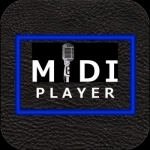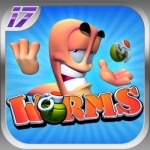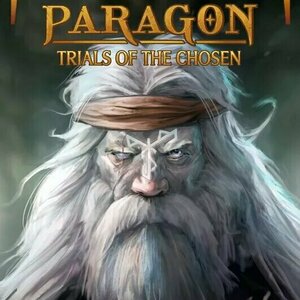Purple Phoenix Games (2266 KP) rated Pirate's Mark in Tabletop Games
Mar 29, 2021
Pirate’s Mark is a bluffing, bidding, press-your-luck card game about finding treasure in the sea and avoiding contracting the Pirate’s Mark: the mark of death. In it players are pirates searching the seas by boasting about how many treasures they expect they will find, flipping over cards, and dealing with any consequences of their pulls. The last pirate to remain unmarked at the end of the game will be the winner and richest of all pirates on the vast seas.
DISCLAIMER: We were provided a copy of this game for the purposes of this review. This is a retail copy of the game, so what you see in these photos is exactly what would be received in your box. I do not intend to cover every single rule included in the rulebook, but will describe the overall game flow and major rule set so that our readers may get a sense of how the game plays. For more in depth rules, you may purchase a copy online or from your FLGS. -T
To setup, include the correct number of cards as described in the rulebook for the number of players. Once the cards are shuffled they will be laid out in a 10 x 15 grid on the table, face-down. The Compass Rose card and die are placed near the card grid and the game is ready to begin!
On a turn a short bidding round commences with players announcing how many cards they believe they can pull from the grid without uncovering a Pirate’s Mark card. This bidding goes around the table with bids increasing with each player until one player calls the bluff and forces the last player to bid to take their turn. That player then pulls a number of cards face-up from the sea and resolves any cards that are immediate, stashes cards that are treasures, and holds cards that contain the phrase, “Play this card,” to be used at a later time.
If the turn is uneventful, by not revealing any Pirate’s Mark cards, then the game continues with bidding and pulling. However, once a pirate reveals a Pirate’s Mark card, they are marked and cannot participate in the bidding any longer (unless they find a way to unmark themselves, which IS possible). Marked players can get back in the game by calling another player’s bluff correctly. There is indeed risk here as a marked player that incorrectly calls a bluff is permanently dead and out of the game.
There are some more rules for the end of the game phase called, “Duel Mode,” but I will let you discover those on your own. Play continues in this fashion until one player is standing and unmarked. This player wins the game and the others need to pack up the 130 cards that were setup. Okay, I added that last part.
Components. This game is a ton of square cards and a fantastic d12 that is only used for the two-player variant. The cards are all glossy, but good quality, and feature photos (akin to screencaps from movies) instead of illustrations. I find the theme to be very present in not only the press-your-luck and bidding/bluffing mechanics, but also in the design of the cards and the photos used. It feels like a piratey game and plays like a piratey game. Like I said, the d12 is fabulous, and I actually happen to own a set of dice that I use for my RPG campaigns… sometimes. All in all the game has some good components and looks great on the table.
So I have some good AND bad news to deliver. First the bad. Some cards that are pulled are way too overpowered. One is called “Blackbeard’s Sword.” It allows the player to “peek under the number of cards left in your bid.” I used this card on a bid of 22 cards and was able to pull all safe cards because this allowed me to see 22 cards and avoid any Pirate’s Marks. Super OP if you ask me. The only other bad I have here is setup. There are 130 cards to be sorted, shuffled, and laid out in a nice-looking grid before the game can be played. For those of us with slight or full-blown OCD that is a nightmare. Luckily, I only stress if the cards are way out of whack instead of just slightly askew.
Now for all the good. I like this game quite a bit. To offset some of the OP of the aforementioned card, the game comes with some pretty great Lucky and Curse cards to be pulled. A couple Lucky cards are, “Drop Anchor,” which ends the player’s turn when revealed, thus negating any Mark pulls, and “Flying Dutchman,” which can be played on a marked player to instantly kill them. Now, I do not condone murder normally, but when playing a pirate game, it is to be expected. The Curses pulled are equally unlucky. “Winds of Fate” allows the person who called the bluff to choose the rest of the cards to be pulled for your turn. OUCH! Especially if they had used “Blackbeard’s Sword” and know where one or more Pirate’s Marks are hidden. Similarly unlucky is “Isla Muerta” which penalizes the player if they have 10 or more treasure cards and pull a Pirate’s Mark – they die instantly from the curse! These are just a few examples of some cards that can be encountered during play, and there are a whole lot more of them included.
I do so enjoy bluffing and luck-based games more and more, and Pirate’s Mark certainly gives it to me on those fronts. Being able to just whisk away 20 or more cards because you happen to have that coveted card you used is devilishly fun. Watching the other players seethe with envy as you pull treasure after treasure and avoid Marks is like winning $20 on a scratch-off. It won’t change your life, but it will give a shot of adrenaline and euphoria for a few minutes. I think Pirate’s Mark fills a void of straight bidding, bluffing, and luck that certainly matches the theme perfectly, and remains a good game as well.
Also, if you happen across one of the expansions, “Parrghty Mode,” it adds another five players to the game and bumps up the count of cards in play from 130 to a whopping 168! This is not for the small of table. I wish there was room inside the base game’s box to fit these extra cards, but alas, there is not.
So if you are like me and enjoy games on the lighter side that perfectly match game to theme, then you have to check out Pirate’s Mark. Purple Phoenix Games gives this one a haunting 8 / 12. I certainly recommend it and will now be finding a place in my main shelf unit for it. Hmm, which game do I make walk the plank…?

Midi Player
Music
App
The all new Midi Player has been re-designed for ease of use. With great sound, this full-featured...

Bat Attack Cricket
Games and Sports
App
The most popular, fun and casual, multiplayer mobile cricket game is here! Set the pace for your...

Voice Memos Lite - HD Audio Recording & Playback
Business and Productivity
App
Voice Memos is an easy to use and handy app to record the meeting, lecture, music and many more. The...

Voice Recorder Lite: HD Audio Recording & Playback
Business and Productivity
App
Live sound with its true feelings. Enjoy recording, playback and audio editing with Voice Recorder....

Voice Recorder - HD Audio Recording & Playback
Business and Productivity
App
Live sound with its true feelings. Enjoy recording, playback and audio editing with Voice Recorder....

The Mind
Tabletop Game
The Mind is more than just a game. It's an experiment, a journey, a team experience in which you...
BoardGames CoopGames 2018Games

Assistant Coach Volleyball
Sports and Productivity
App
Assistant Coach Volleyball is the most complete and professional app for volleyball coaches to...
Purple Phoenix Games (2266 KP) rated Paragon: Trials of the Chosen in Tabletop Games
Sep 18, 2021
Paragon: Trials of the Chosen (which I will lovingly refer to as Paragon from here on out) is a fantasy deck construction fighting card game where players will be outfitting their chosen avatars with awesome gear and abilities and sending them to battle against other players’ avatars. All players will know EXACTLY what is in their draw deck AND in what order because they have constructed it card by card and the deck will never be shuffled. Intrigued?
DISCLAIMER: We were provided a copy of this game for the purposes of this review. This is a retail copy of the game, so what you see in these photos is exactly what would be received in your box. I do not intend to cover every single rule included in the rulebook, but will describe the overall game flow and major rule set so that our readers may get a sense of how the game plays. For more in depth rules, you may purchase a copy online or from your FLGS. -T
To setup, each player chooses two avatars with whom they will play. Avatars belong to one or two different Disciplines, which allows players to construct their deck with Discipline-specific cards to be used during the game. As part of setup, each player will choose 20 cards from the gigantic deck of Equipment and Ability cards with which they will form their deck for play. Per the rules, each player will then place their chosen avatars and ordered decks in front of themselves along with a blue 1d10, the green 1d10 (all set to 1 to begin), and pile of Hearts tokens. Players draw their starting hand of five cards and the battle can begin!
The green 1d10 notates the round number, and the blue 1d10 per player represents their current Energy. To bring cards into play a player will spend the printed amount of Energy and track this on their 1d10.
Each round is played over several phases. The game is designed to play to 10 rounds, but players may play past 10 while keeping the round tracker and Energy static for all rounds after 10. The first phase is the Start Phase, and acts as a maintenance phase where players will activate any “Start Phase” effects from played cards, ready all exhausted cards, increase all the d10s, and draw the top card from their deck. Should a player be unable to draw a card during this phase due to the draw deck being empty, they immediately lose the game.
The second phase is the beefy Main Phase. This is where all the action happens. During this phase, players will take turns playing cards until both players have passed. On a turn a player will have the choice of five actions: Play a Card, Trigger an Activated Effect, Declare an Attack, Channel Energy, and Pass. To Play a Card the active player will pay the cost (in Energy) printed on the card and bring it into play exhausted. Cards brought into play this way will be attached to one of the avatars and act as an equipment or new ability, as long as the card played matches the Discipline of the avatar to which it is attached.
To Trigger an Activated Effect, the player will need to satisfy any qualifying conditions of the activation, which are printed on the card. These abilities can vary wildly and add immense strategy to play.
Once a player believes they have enough firepower attached to their avatars they may instead Declare an Attack by announcing their target and exhausting the card that is attacking. It is here that Paragon strays from the norm. Instead of damage simply being dealt to the opponent, the player may engage in a volley of playing Instant cards from hand (and paying their Energy costs) to add to the card stack. This is important, as the stack is then resolved in reverse order of play. So the last card to be played on the stack will be resolved first. This can result in attacks being nullified or shielded before they even proc. Sneaky and wily players will certainly use this phase wisely to draw out cards from their opponents’ hands. Once the stack is built, it is resolved and damage is calculated.
Players may instead elect to Channel Energy by exhausting one of their avatars to add 1 Energy to their pool. This may be repeated as long as the other avatar is available to be exhausted.
Lastly, and most easily, when players have no other actions they can or wish to complete, they may Pass in order to close out the round of phases.
When both players have Passed, the End Phase begins, and acts as another maintenance cleanup phase to ready players for the next round. This includes resolving any “End Phase” effects and increasing the round d10 by 1. The game ends once a player’s two avatars have been defeated or a player is unable to draw a card from their draw deck. The winner then boasts mightily in the face of their competitor and spews taunts and rematch challenges.
Components. This one is simple. Paragon has a giant stack of cards, a few d10s, and some wooden Heart tokens. The tokens are double-sided with a 1 printed on one side and a 3 on the other. These are obviously to track HP loss, and are fine. The 3d10 in this version are entry-level, and I will probably bling it out with some d10s that are more themed. The cards. Okay, I will certainly be sleeving this game. I want to keep my copy in excellent condition for as long as I can. In the last photo here, I splayed out the avatars that are currently included, and all the other cards stacked are the equipment and abilities to be attached to the avatars. I have no problems with the components in Paragon (I just want to get more exciting d10s to use).
There really is an insane amount of choice and customization that can be had in constructing a deck for the chosen avatars, and that is precisely why I mention in the opening that I have yet to understand all the components: how will I ever be able to perfect a combination that speaks to me and works with my style when I have about a zillion options available? I know many gamers will salivate over the amount of deliberation and possibilities contained in the box, and after several plays, I find myself weighing options in my head throughout the day. When you think about a game throughout the day and how you will attempt to play it next time, I feel that is a sign of a truly great game for you.
This is certainly not for everyone, but it definitely is for me. I truly cannot wait to try out different combinations, strategies, and deck configurations each time I play. I can also see Paragon being ripe for multiple expansions, with new avatars representing new Disciplines, or adding in expansion material that is themed for different IPs or historical eras. Well, I guess it is time to pick up a part-time job to fund my Paragon expansions.
If you are like me and enjoy games that offer near-infinite possibilities and the true feeling of never playing the same game twice, then Paragon needs to be on your shelf. The rules are easily-digestible, games take 30 minutes once you are familiar with it, and there are a ton of unique cards included in this box. Purple Phoenix Games gives Paragon an excited 5 / 6. I really think that with more plays and tweaks to my copy (maybe an expansion or two thrown in) this could eek up to a 6 and earn a Golden Feather Award from me. It is smooth, exciting, and just oozing with customization that many gamers are going to absolutely love. Go find yourself a copy and get it to the table right away!


